On the morning of 28 February, my friend Yuliya and I set off early. Synagogues and Jewish cemeteries in Moluvėnai, Vievis, Žasliai, Kaišiadorys and Žiežmariai were on our way until we reached Kaunas in the evening, the second largest city in Lithuania and the first capital after independence in 1918.
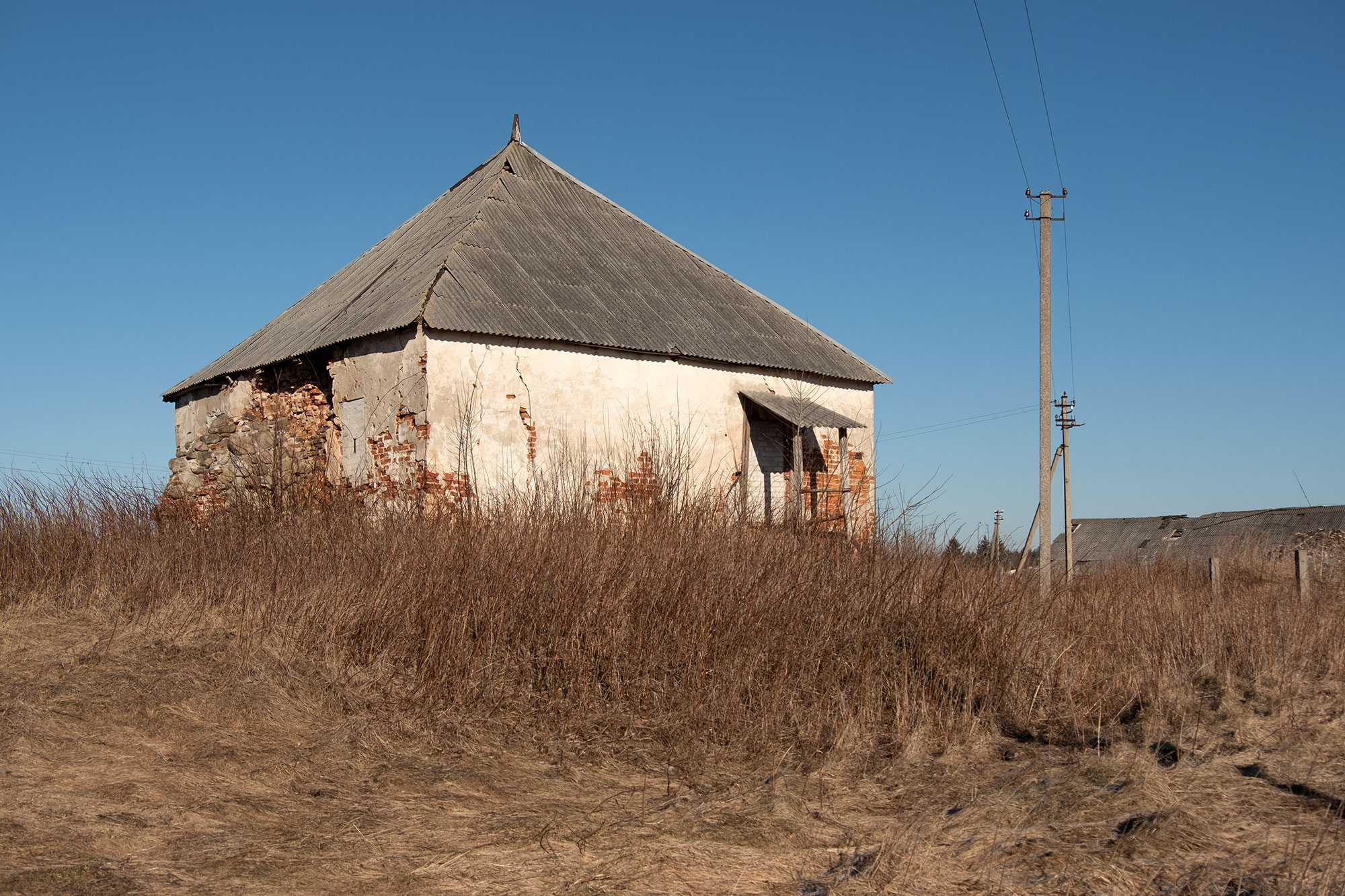
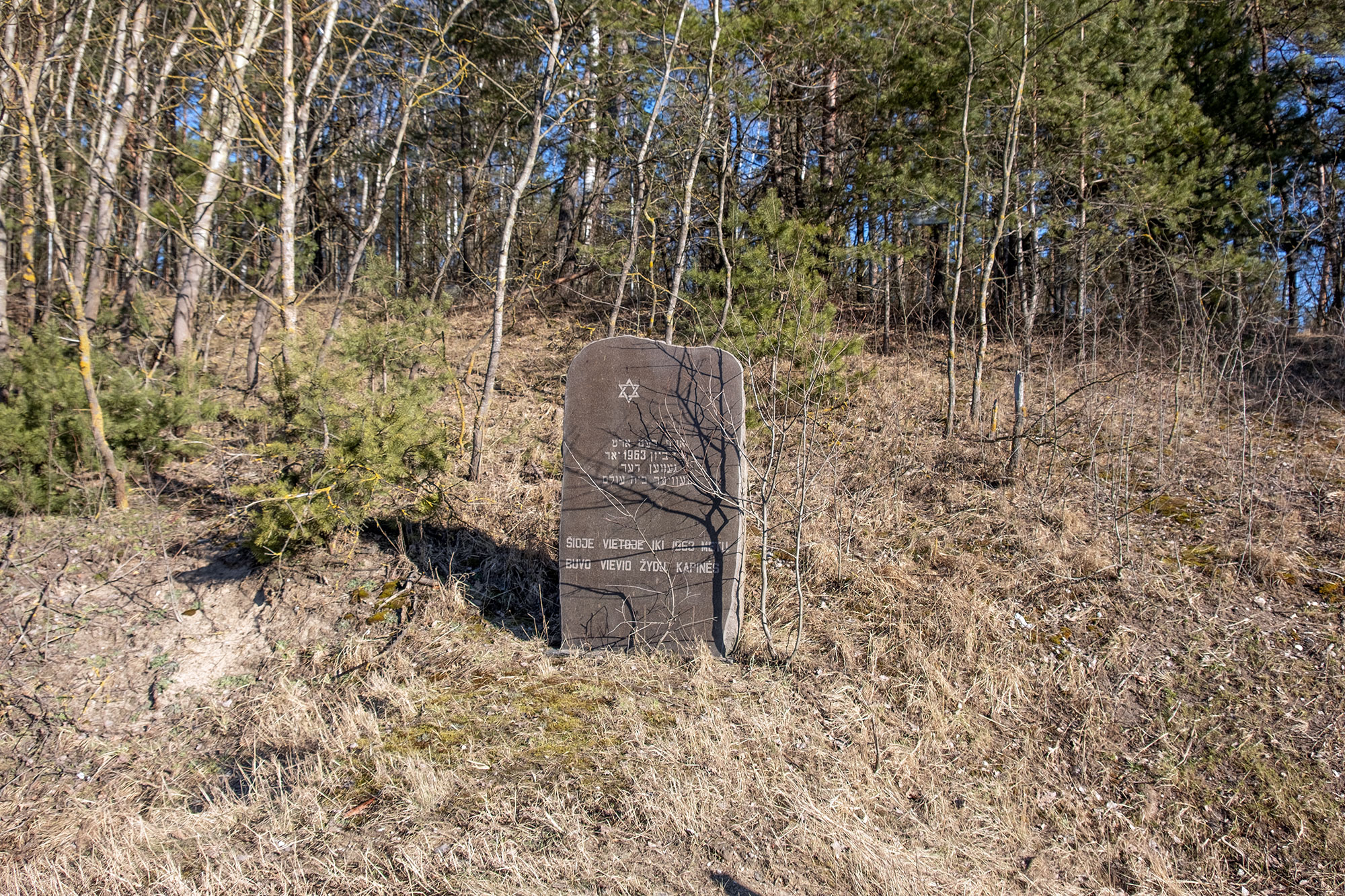

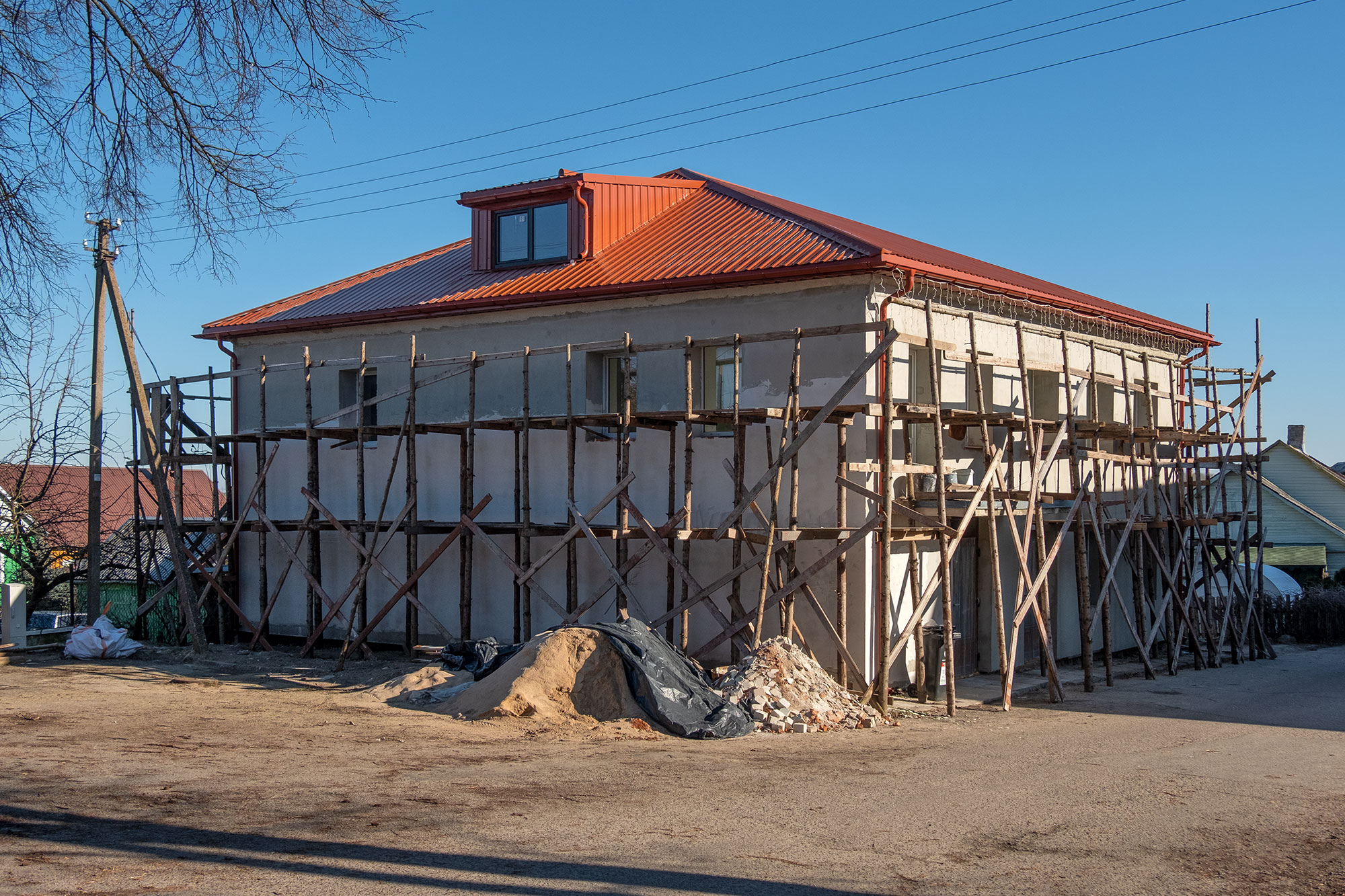
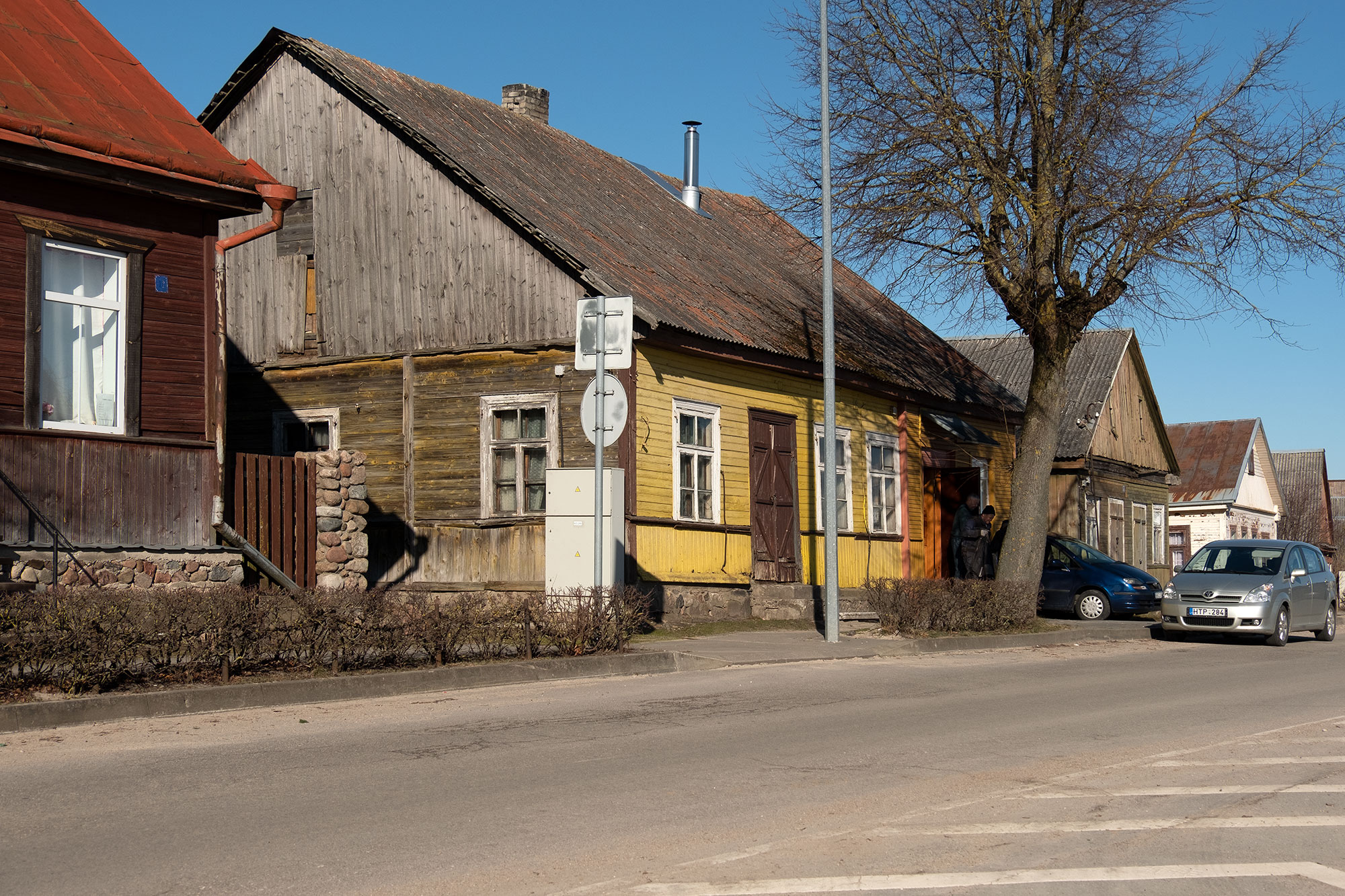

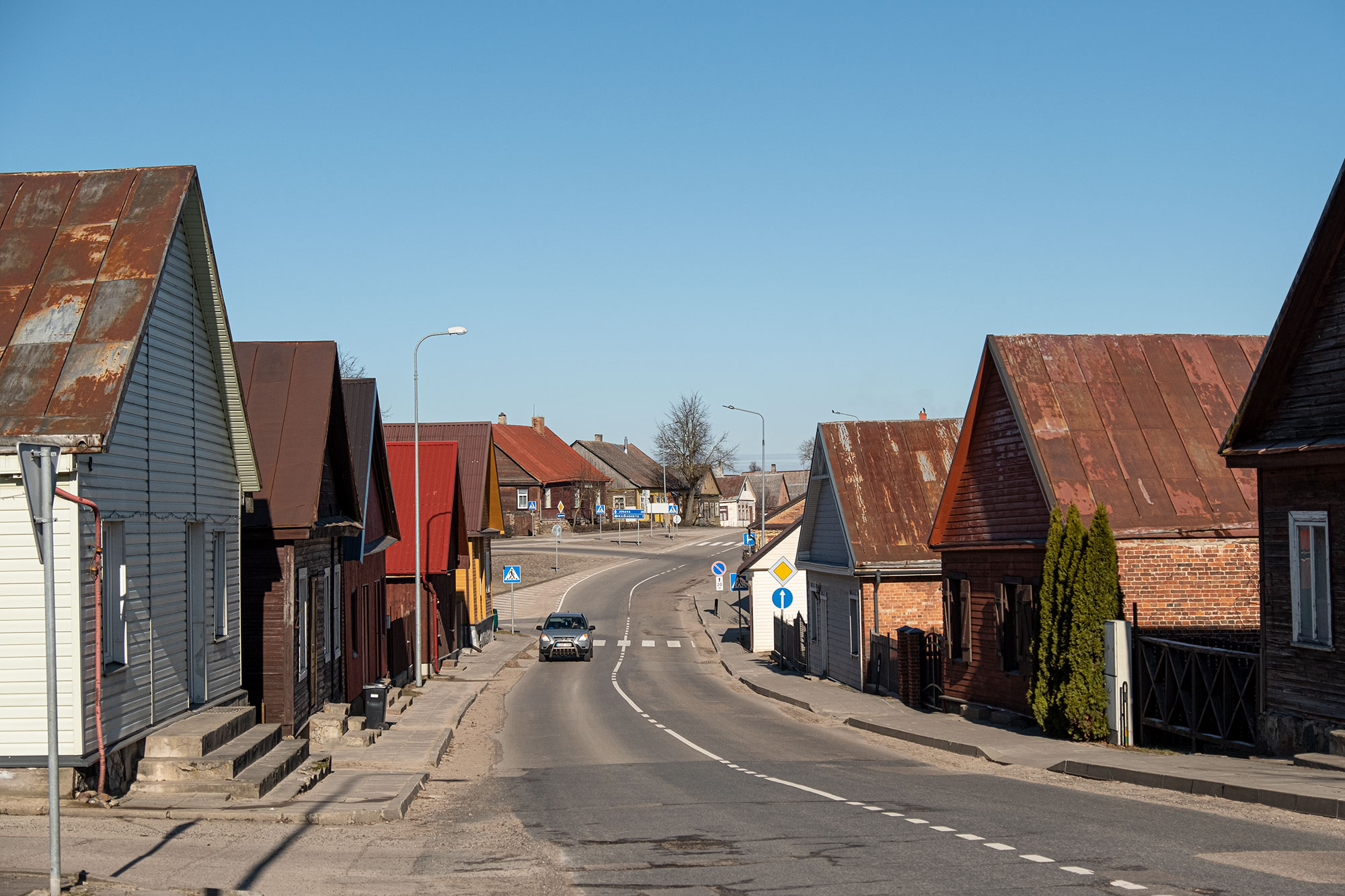

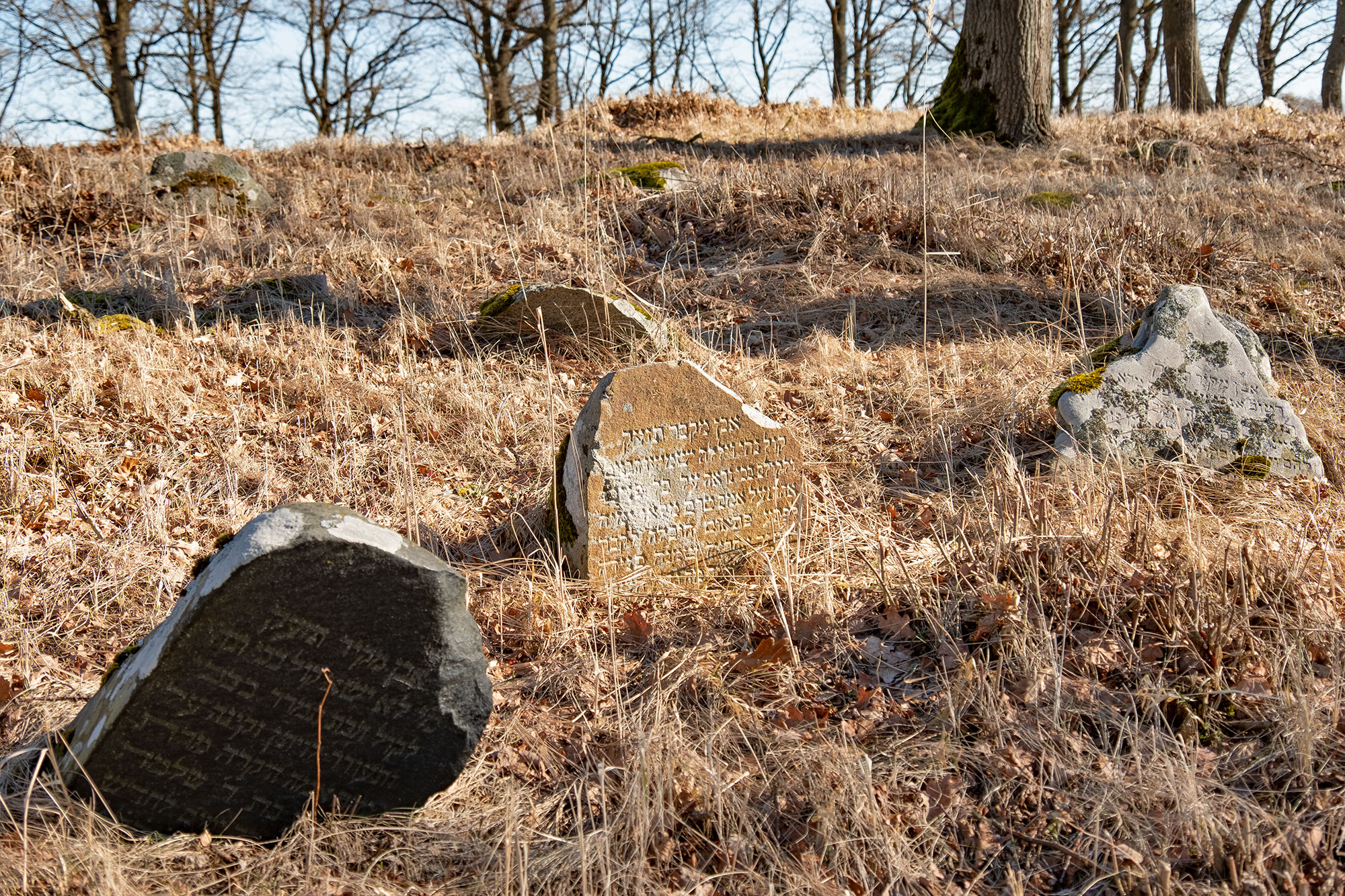
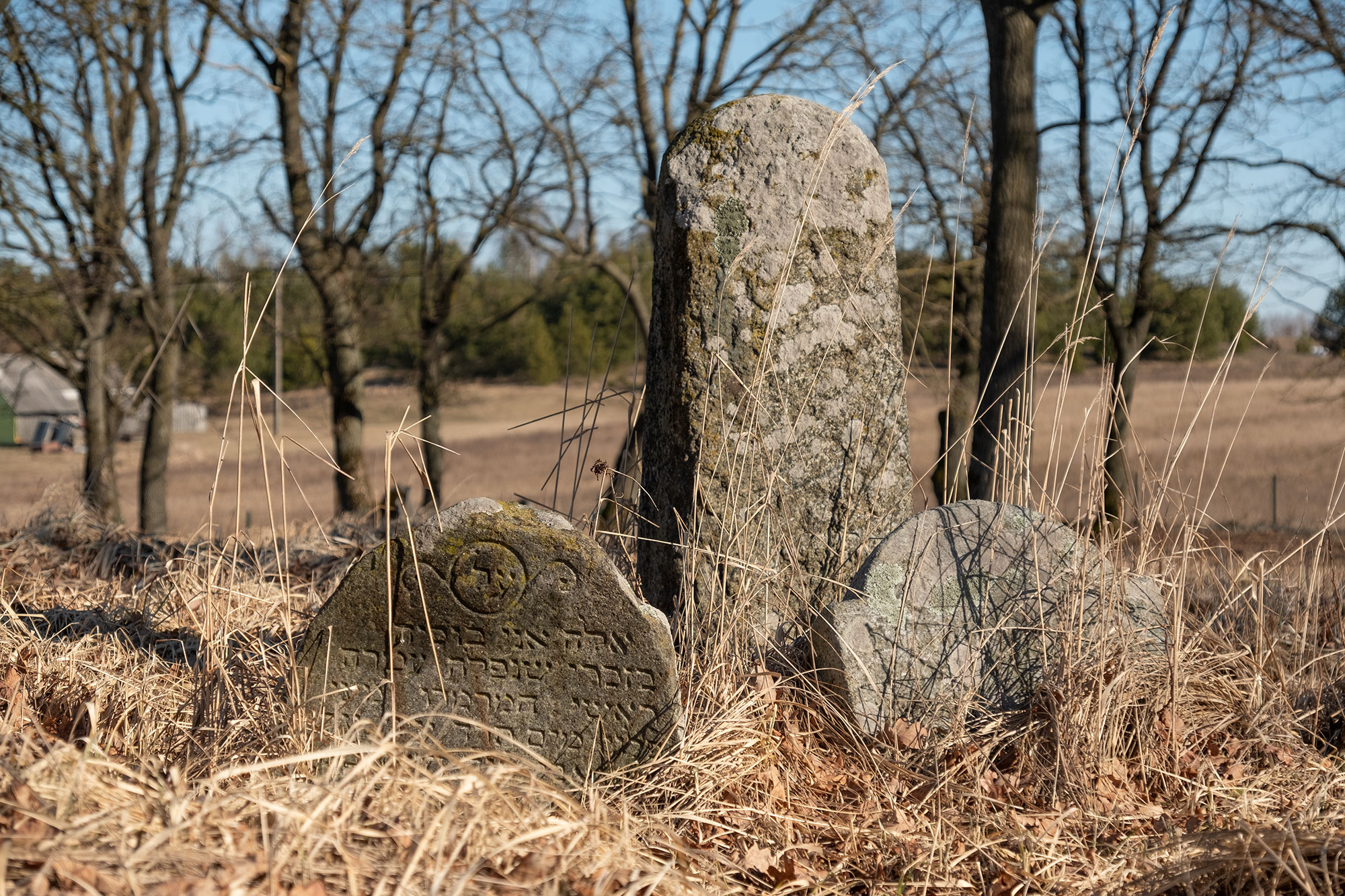

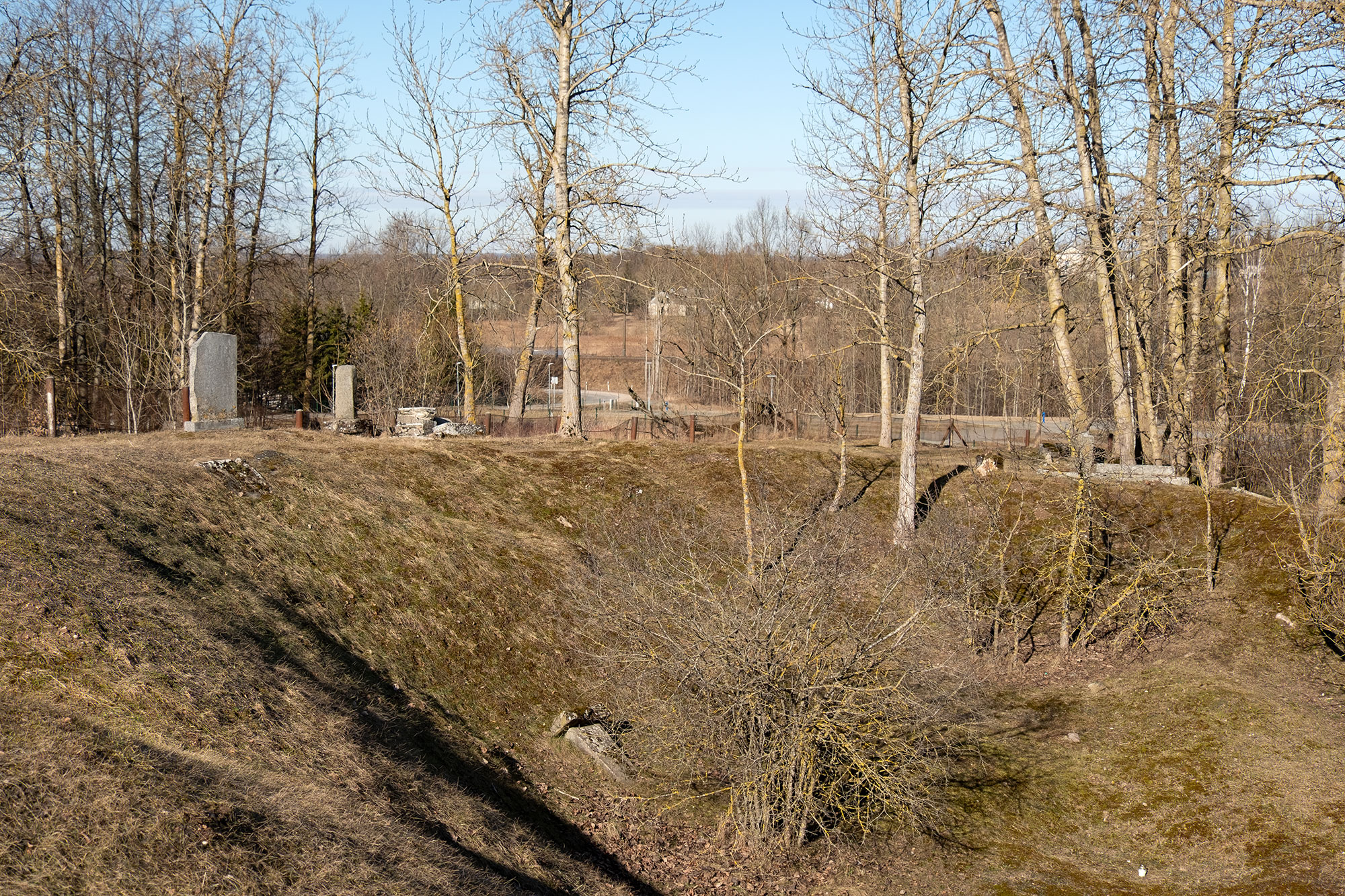
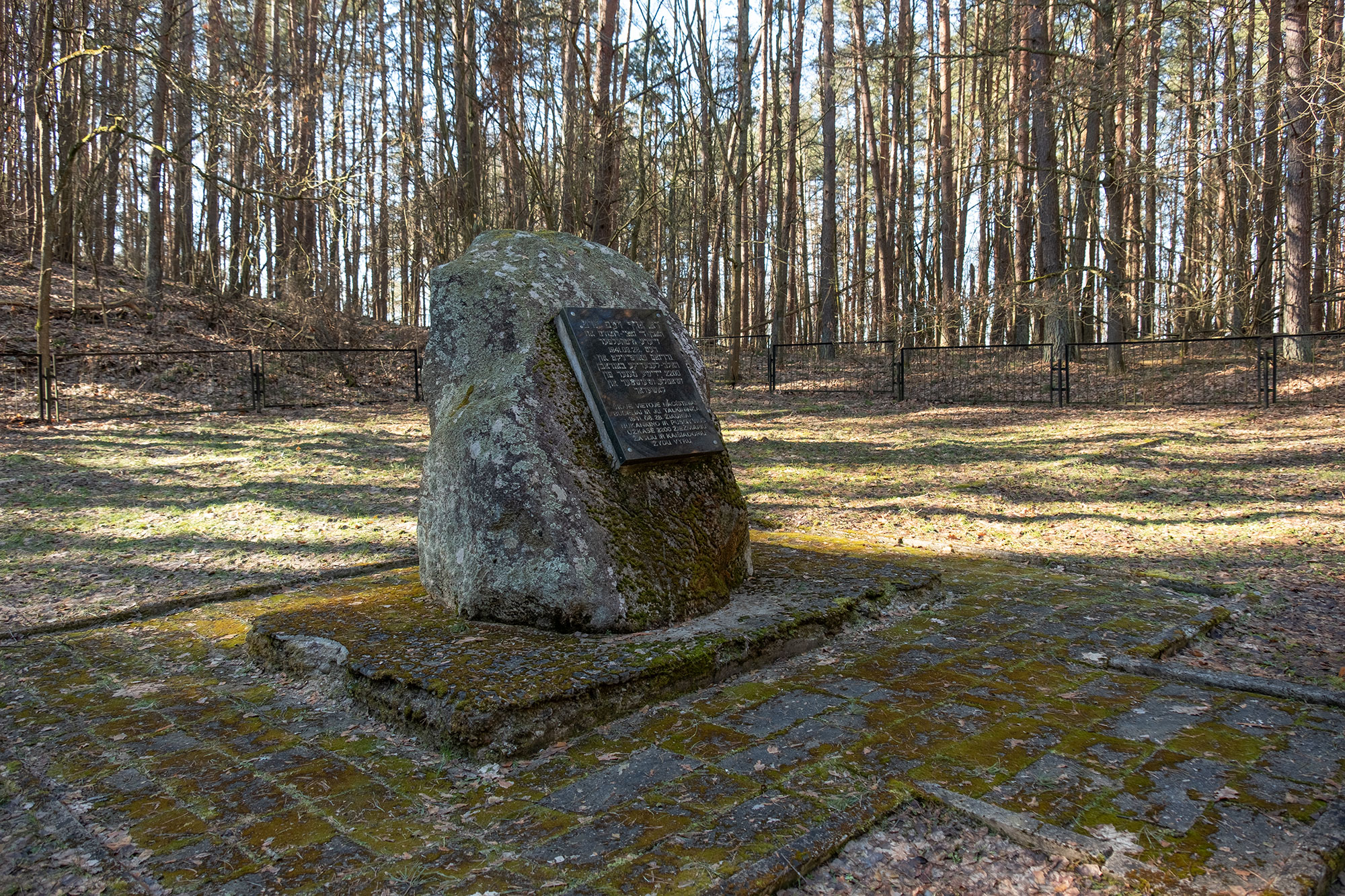

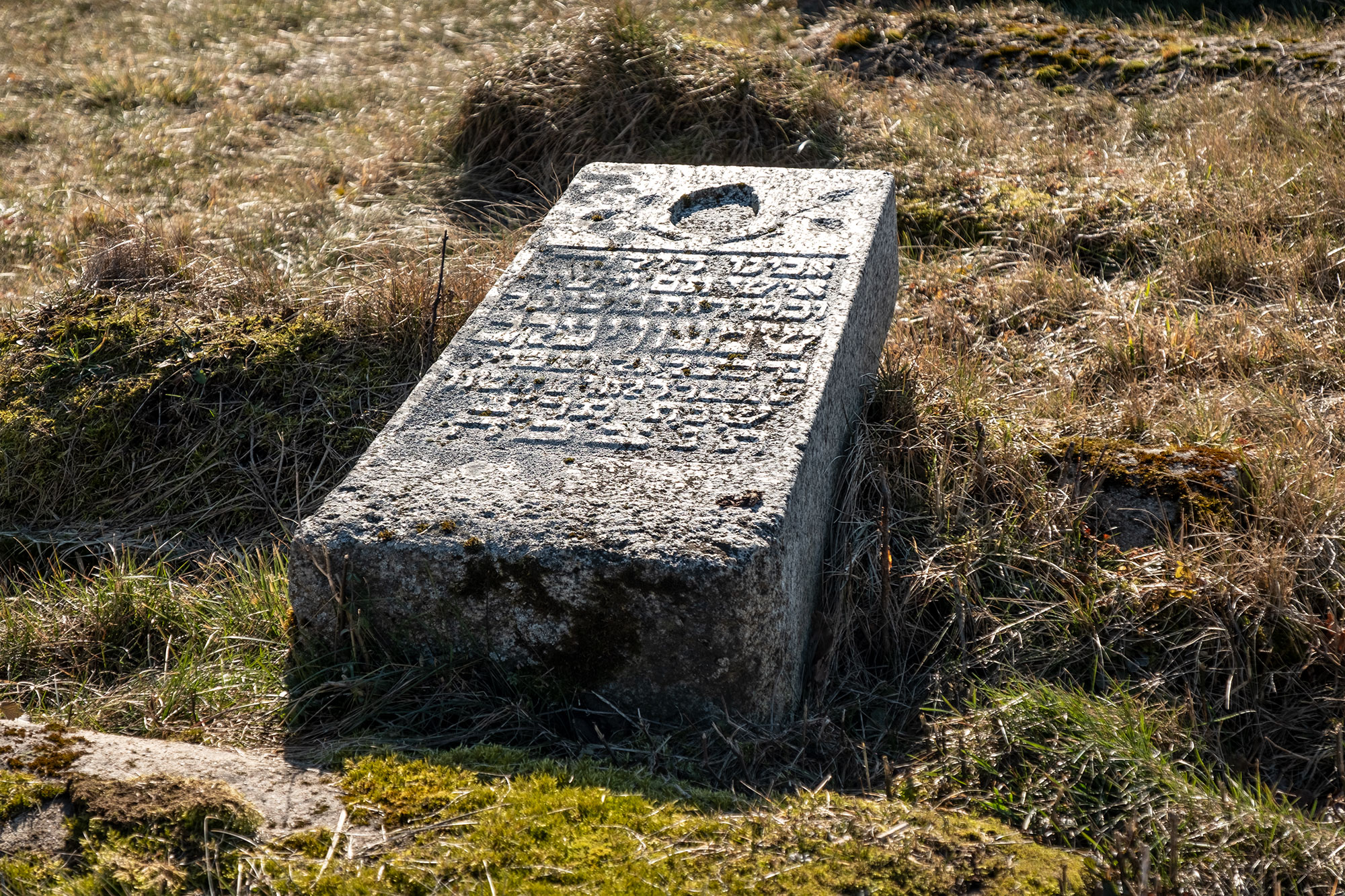


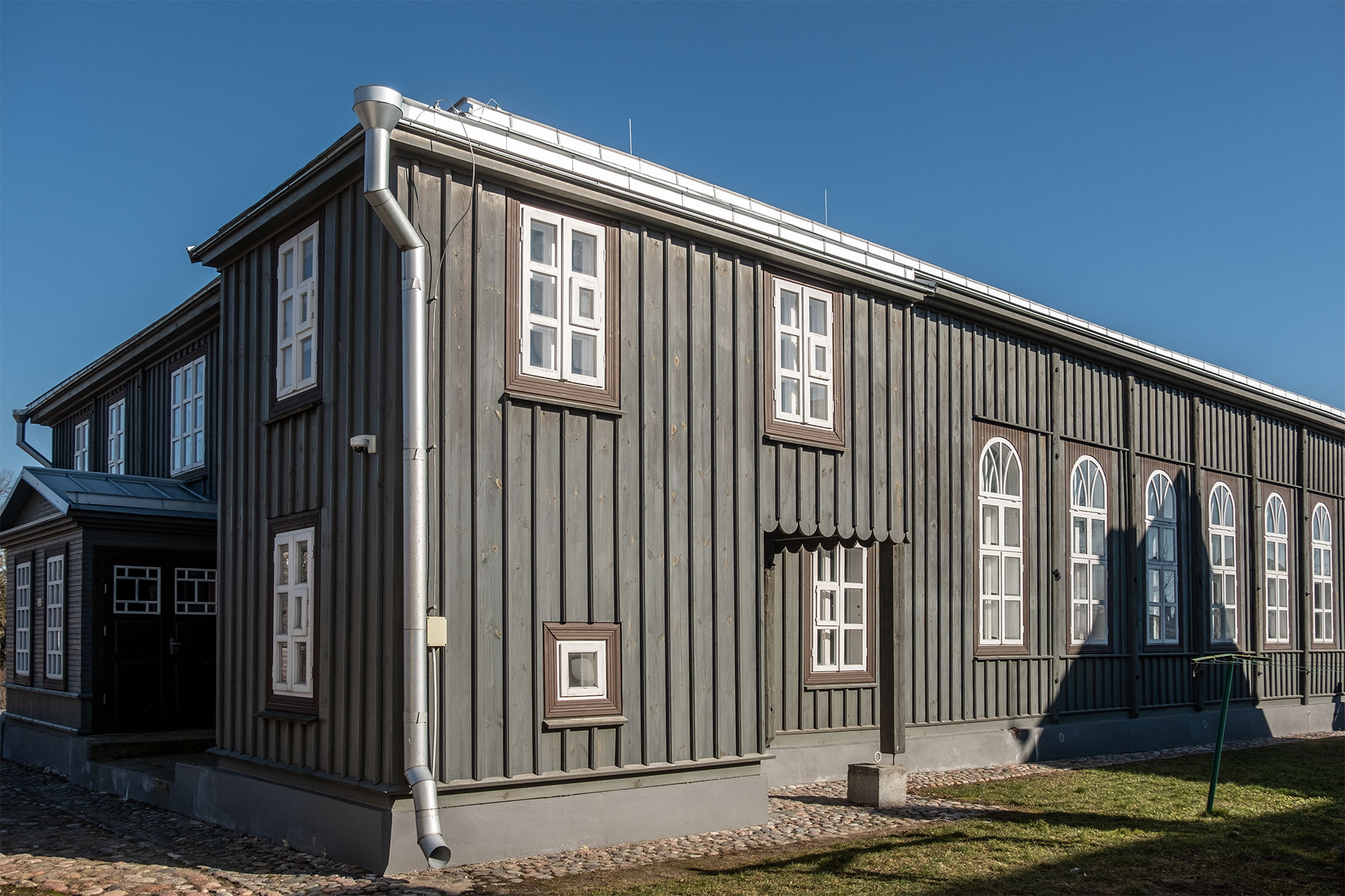

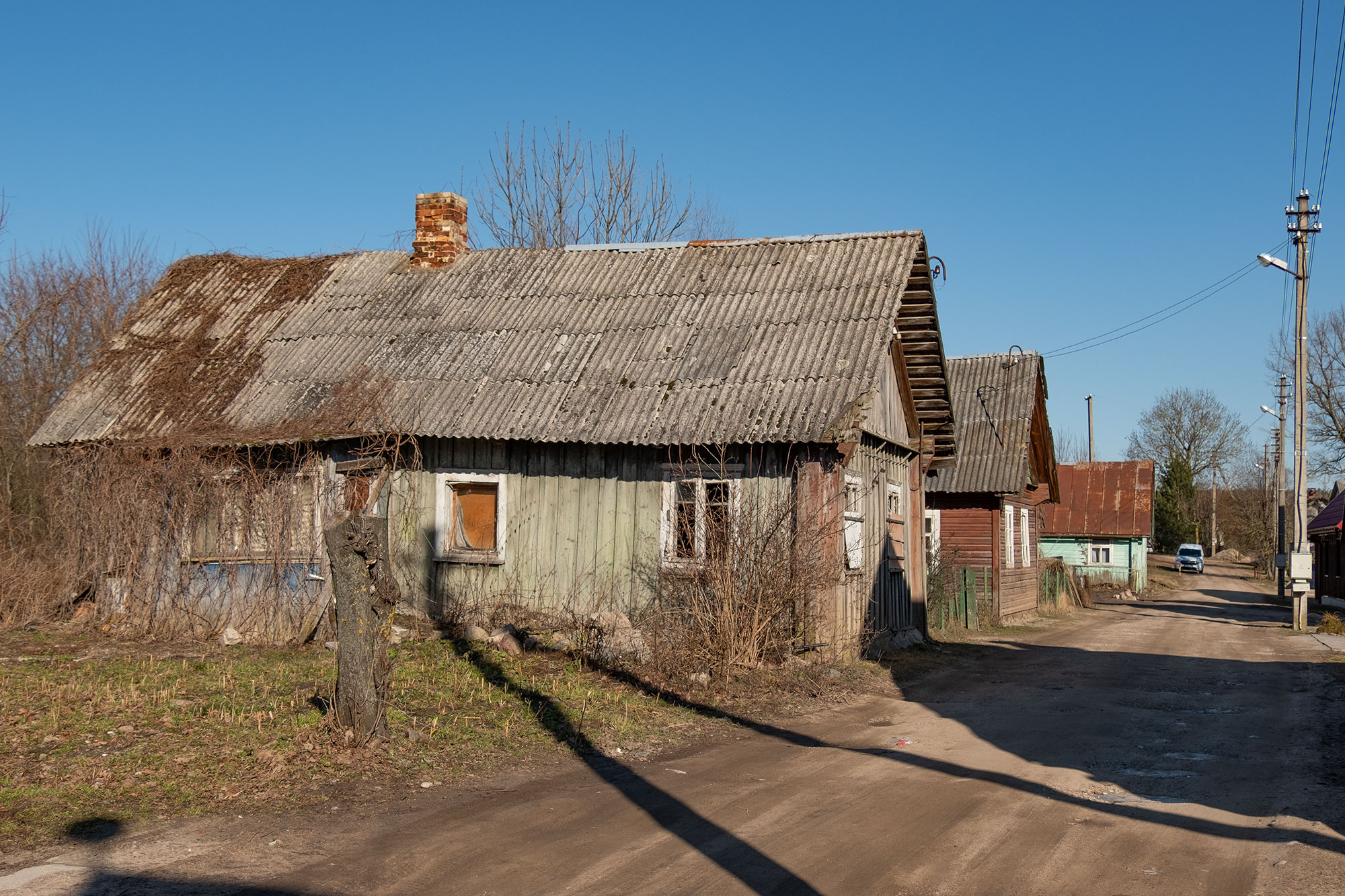

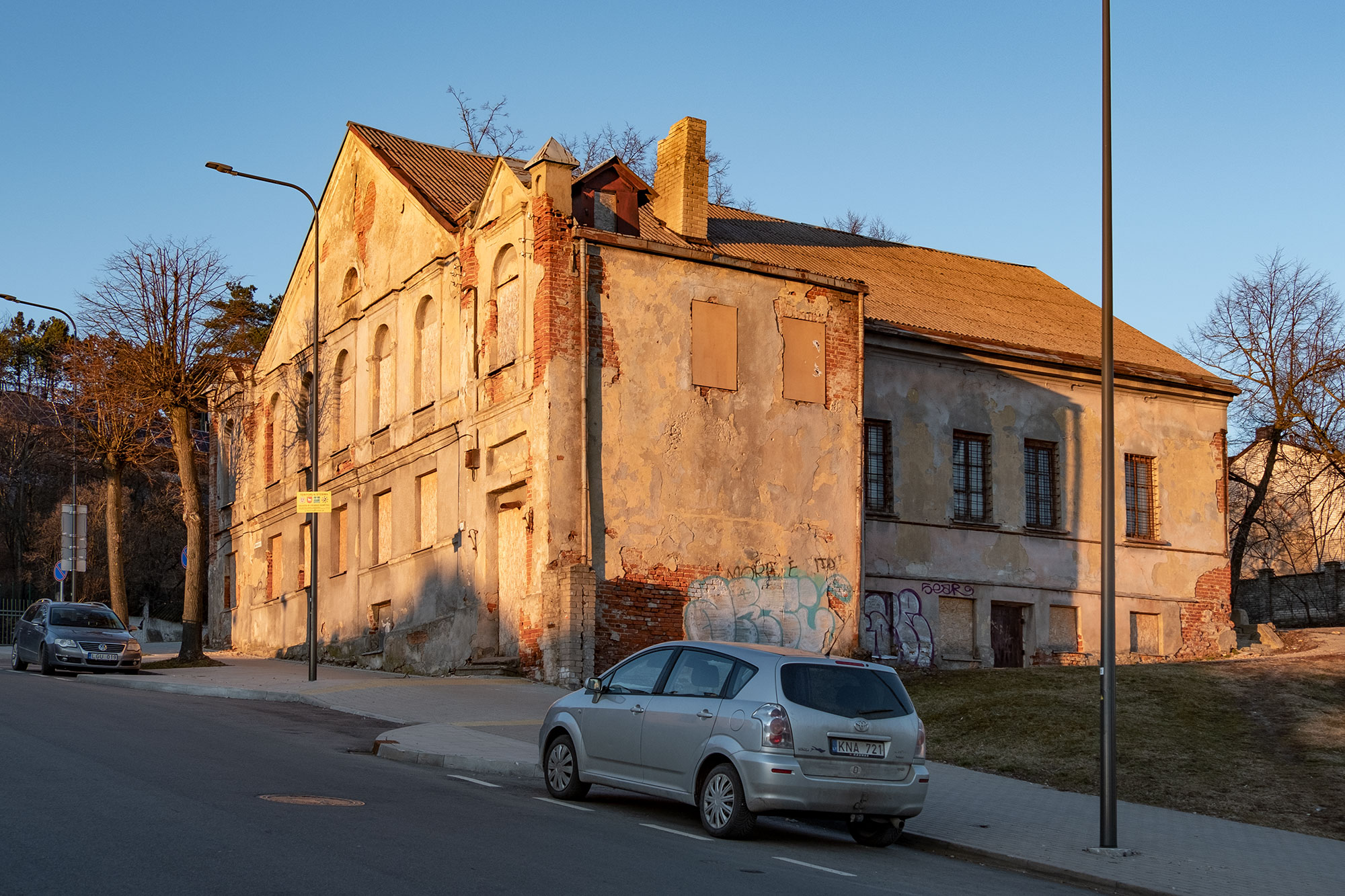

The night had been cold and the morning sky was a pristine blue. It’s not necessarily the weather I like for photography. The shadows fall hard and the lights bleach out, but you can’t choose the weather. At least the sun warmed a little.
Today’s drive would take us towards the northwest. Our first stop was in Moluvėnai, a small town with a large logistics centre where trucks are transhipped. Outside the village and with no traces of adjacent residential development lies a former Karaite kenessa, one of those traces left by the Karaim in Lithuania. Abandoned, the ruins of the building lie in the barren winter landscape.
We drove on, stopping briefly on the shoulder of the motorway to find the Vievis Jewish cemetery. But the site is widely fenced and crossed by a deeply cut stream. A memorial stone right next to the motorway points to the cemetery. The rest remains invisible in the shade of the forest.
The small villages, the former shtetls, are pretty. Most of the houses are built of wood, some of brick – the typical brick architecture of the Russian Empire. Žasliai is one such place. I asked Yuliya if the places reminded her of her homeland Belarus. “Yes, very much so,” she said. At the Jewish cemetery we found another parallel. The old gravestones are made of simple boulders, the text is sparse, decorations rare. The newer graves are made of cement, not natural stone. A material that is not particularly durable. This view would be repeated throughout our journey.
The cemeteries in Kaišiadorys and Žiežmariai are quite similar to those in Žasliai, but the first one has a special feature. It is situated on a hill overlooking the flat landscape formed by ice-age glaciers. There is a huge hole in the middle of the hill. We wondered if the cemetery might have served as an observation post or artillery position during the war and been bombed. When we uttered the word war, our thoughts returned to our friends in Ukraine. It is a depressing experience to be able to travel freely and peacefully while friends are in danger and have to fear being bombed or shelled at any time.
The synagogue in Žiežmariai is special, it is one of the last wooden synagogues in Europe. Like other wooden synagogues in Lithuania, it was recently restored.
In the afternoon we reached Kaunas, the sun was already low. Unfortunately, we found the large choral synagogue closed. No, there was no one there at the moment, we were told on the phone. We walked to the Hasidic Kloyz, a magnificent building on the slope of a hill. On the way to the hotel, Kaunas gave us another gift. On the former building of the Maccabi sports club we found a beautiful ghost sign with Cyrillic letters. Tomorrow we would explore Kaunas further.

This work is licensed under a Creative Commons Attribution-NonCommercial-NoDerivatives 4.0 International License.
Thanks for doing what you are & sharingvthese outstanding pictures so we can see them.
Dear Christian Herrmann
I have been following your blog for several years. I am French (sorry for my mistakes in English) but my Jewish father was from Bucovina. I am writing a book of the story of the family. As I am a small but professional writer I have a little hope that it could be published.
My research made me discover the places where my ancestors used to live and. Like many bucovinian Jews, they were coming from Galicia. I identified two places : Feltin, disappeared today, and Lutowiska. Lutowiska is famous for his Jewish cemetery, one of the oldest, largest and well preserved in centre of Europe. Did you take photographs of this one ? I send you those that I found in the internet.
I wanted to go there but covid stopped us and now it is the war.
Congratulations for you marvellous work !
Best regards
Catherine Neykov
Dear Catherine, unfortunately I’ve not been to both mentioned places.
Best wishes
Christian